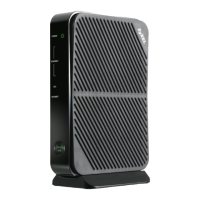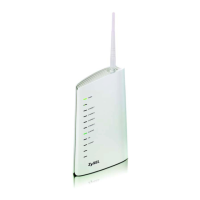Chapter 5 Broadband
P-660HN-51 User’s Guide
53
5.2.1.1 Bridge
This screen displays when you select the Bridge mode.
Figure 14 Broadband: Add/Edit: Bridge Mode
The following table describes the labels in this screen.
Table 7 Broadband: Add/Edit: Bridge Mode
LABEL DESCRIPTION
General
Active Select this to activate the WAN configuration settings.
Name Specify a descriptive name of up to 15 alphanumeric characters for this
connection.
Mode Select Bridge when your ISP provides you more than one IP address and you want
the connected computers to get individual IP address from ISP’s DHCP server
directly. If you select Bridge, you cannot use routing functions, such as Firewall,
DHCP server and NAT on traffic from the selected LAN port(s).
Encapsulation This field is not available if you select Bridge mode.
ATM PVC Configuration
VPI The valid range for the VPI is 0 to 255. Enter the VPI assigned to you.
VCI The valid range for the VCI is 32 to 65535 (0 to 31 is reserved for local management
of ATM traffic). Enter the VCI assigned to you.
Encapsulation
Mode
Select the method of multiplexing used by your ISP from the drop-down list box.
Choices are:
• LLC/SNAP-BRIDGING: In LCC encapsulation, bridged PDUs are encapsulated by
identifying the type of the bridged media in the SNAP header.
• VC/MUX: In VC multiplexing, each protocol is carried on a single ATM virtual
circuit (VC). To transport multiple protocols, the Zyxel Device needs separate
VCs. There is a binding between a VC and the type of the network protocol
carried on the VC. This reduces payload overhead since there is no need to
carry protocol information in each Protocol Data Unit (PDU) payload.

